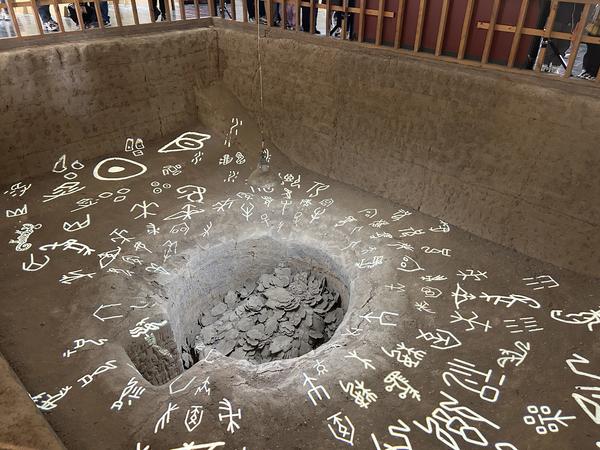Editor's note: Confirmed by historic documents, archaeological excavations and oracle bone inscriptions as the capital site of the late Shang Dynasty (1600-1046 BC), Yinxu or the Yin Ruins is usually regarded as the cornerstone of the project on tracing the origins of Chinese civilization launched by China in 2001. As a key component of world civilization, it has provided solid evidence for the continuity and pluralistic and integrated pattern of Chinese civilization, bringing recorded Chinese history nearly 1,000 years earlier than previously believed. Starting today, we, together with HICC and Yinxu scenic spot, are launching a series of videos about Yinxu to help you gain a deeper understanding of it. Here is the first episode: Understanding Chinese Civilization - Beginning with Yinxu, Anyang.
Click on the video above
The site of Yinxu, Anyang, is located in the northern most region of Henan Province. It is the earliest Shang city that is both recorded in historical texts and evidenced in oracle bone inscriptions and archaeological remains. As early as 1300 BC, Pan Geng, the 20th king in the Shang royal genealogy, in an attempt to pacify social unrest moved the capital from the present-day city of Qufu in Shandong Province to the village of Xiaotun in Anyang City. A total of 12 Shang kings reigned at Yinxu over 8 generations and 255 years. Yinxu is the first ancient capital in Chinese history documented in contemporary written records.
In 1046 BC, King Wu of Zhou conquered Shang. The region fell into decline, withered into a wasteland over time and later became known as the Ruins of Yin. The area of Yinxu is roughly 36 square kilometers. Scientific archaeological excavations at Yinxu began in 1928. Over the past nine decades, numerous Shang period remains have been unearthed: foundations of palaces and temples, monumental royal tombs, sacrificial pits, settlement sites, lineage cemeteries, craft production sites, oracle bone pits and so on. A vast amount of oracle bones, bronze vessels, jade objects and many other kinds of artifacts have been discovered. Revealed through these material remains are multiple facets of the 3,300-year-old Shang city.
Yinxu was among the first Major Historical and Cultural Sites Protected at the National Level designated in March 1961. In March 2001, Yinxu was ranked first in the "Top 100 Archaeological Discoveries in 20th Century China". On July 13, 2006, at the 30th session of the World Heritage Committee, the universal cultural value and exemplary management of Yinxu was acknowledged: it was granted the status of UNESCO World Heritage Site. Yinxu was ranked one of the first National Archaeological Relics Park in 2010.




